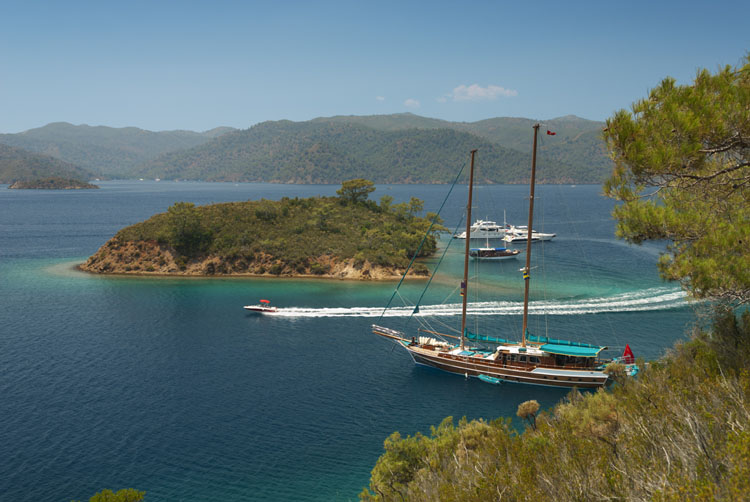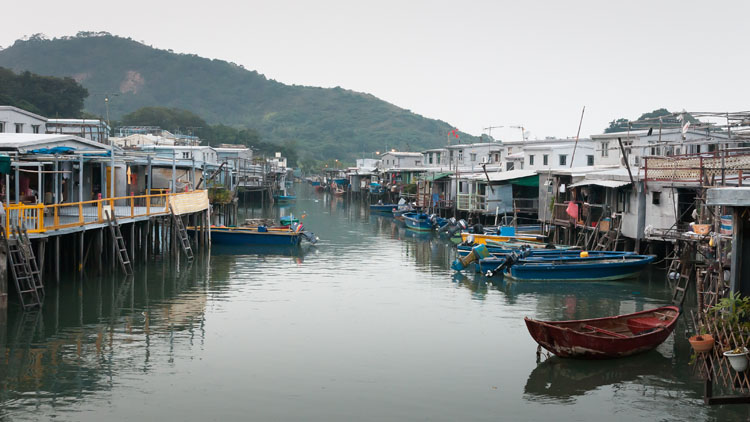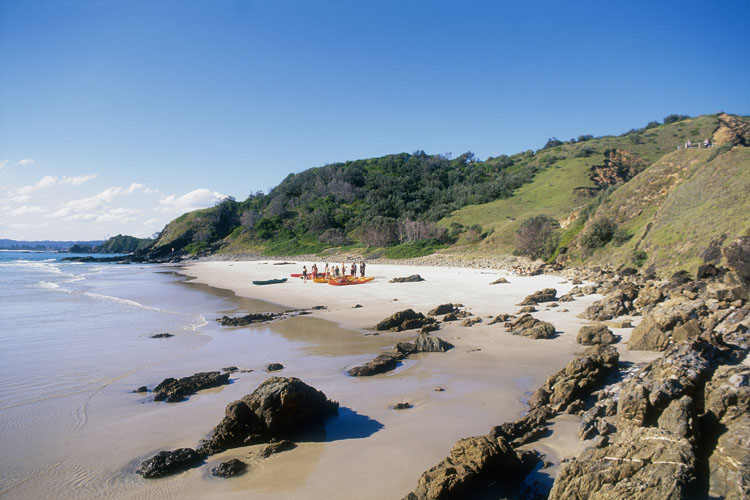Yet for device addicts who check their phone 100+ times per day and troll Facebook in the bathroom – you know who you are – how do we let go? First and foremost, once you’ve gone deep and found the strength to shut off your phone, don’t cave. Take one seemingly innocent peek at your work email and you’re a goner. Delete bookmarks to time-sucking websites and blogs. Tell people not to call, and if they do, don’t pick up – reach for your cocktail instead. Do what you have to do not to break the seal.
Digital detox still sounds impossible? Let us recommend a few ultimate escapes that can lure you into booking an ultimate vacation from your digital life. Though once you arrive, how fully you unplug is up to you.

Gulet in Turkey. Image by Stuart Black//Robert Harding World Imagery.
For sheer escapism, nothing beats boarding a Turkish gulet (wooden motored sailboat) and cruising Turkey’s southwestern Turquoise Coast, exploring ancient sites, anchoring in serene bays and dining on gorgeous meals.
There are dozens of possible itineraries and boat tours, from the sheltered coves of Bodrum to the more exposed coast toward Antalya.
No matter where you go, you’ll spend mornings reading, or swimming or snorkeling in gin-clear waters right off the boat. Lunch is a sumptuous spread of ripe red tomatoes, beans and okra in olive oil, savory pastries, kebabs, and ultra-fresh fruit. After gorging yourself, you’ll let the gentle sea breeze lull you into a nap while the captain motors gently to your next anchorage. Or you might lie back and take in the scenery: steep limestone mountains, the occasional headland, yet another sheltered bay, the sparkling Mediterranean. You may even stay on deck to sleep for the night, under a dark canvas of diamond-bright stars.
Daily life aboard a Turkish gulet is deeply relaxing and is the ideal way to combine sightseeing with a thoroughly stress-free vacation – and there’s no wi-fi.

Tai O, Hong Kong. Image by Phoenix Law//Flickr Open.
Yes, you can escape one of the world’s most wired, vibrant, densely populated megalopolises without leaving the city limits. Tai O, on the far-flung western corner of Lantau Island, is one of Hong Kong’s last remaining fishing villages. This respite from urban chaos offers a rare peek into longstanding Chinese traditions, intriguing colonial history, and a unique natural environment.
Its remoteness has allowed Tai O to escape the rapid development that Hong Kong is known for, ensuring the traditional aspects of this ancient settlement have remained intact. Today about 200 residents, mostly elderly folk, ply a small fishing trade, allowing visitors an intriguing look into an age-old culture. Meandering through Tai O’s labyrinthine backstreets, over rickety wooden bridges, and past stilt houses reveals salted fish hanging from lines to dry, baskets brimming with sea critters, the constant clickety-clack of mah-jongg tiles and temples where huge whale vertebrae are still venerated with incense, as they have been for centuries.
Take a cultural boat tour along the village’s historic waterways, a sunset cruise for a chance to see the rare Chinese white dolphin, or a hike in the hills that surround Tai O on three sides. For more leisurely pursuits, the Tai O Heritage Hotel’s rooftop restaurant offers lovely water views, an Asian fusion menu and endless chilled white wine.

Easternmost beach in Australia, Little Wategos Beach, Byron Bay. Image by David Messent/.
Australia’s Byron Bay is the perfect place to catch up with yourself. Leave your karma and devices at the door, and thus unencumbered, you’ll reconnect with your inner self and realign your chakras, maybe even catching a wave or two along the way.
Locals boast that they’re the first people the sun kisses as it rises each day; the town sits on the easternmost point of the Australian mainland. This circle of land, a scared spot for the indigenous Arakwal people, was a site for Aboriginal initiation rituals for eons. Today even the most hardened cynic feels the spirit of the land here.
To the Arakwal people Byron is known as ‘the meeting place’, dread-locked residents call it ‘Chill-Out Central’, and bendy baby boomers revel in its healing powers noted by all. Mind and body meet in Byron’s many yoga or therapeutic retreats.